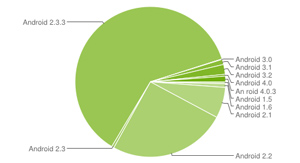It's time Google starts paying for Android updates


ZDNet's James Kendrick made the argument too: How to fix the Android update mess: Paid updates
We all know how dire the situation is. Android 4.0 (codenamed Ice Cream Sandwich) was released in November 2011. Four months later, and it is installed on just 1.6 percent of Android devices, according to Android Developers. Compare this to Android 2.2 (codenamed Froyo), which a whopping 25.3 percent of Android devices are still running. This fragmentation causes lots of problems, especially for app developers.
The aforementioned article discusses how feasible it is to pay for updates:
For paid system updates to work, they need to be optional. If a user doesn't want to pay $10 for newer software, they should not be berated with update notifications.
Screw that. The average Android user doesn't even know his or her phone has Android. The average Android user doesn't know he or she can update. The average Android user should not have to pay for updates. The average Android user should be nagged to update. The average Android user should be supported by… Google.
The only demographic that might pay is a typical tech geek who doesn't install custom ROMs on his Android device. Nobody else will. The only way to really get that 1.6 percent number deep into double digits, and quickly, is for Google to pay carriers and OEMs to push updates.
Google should say: "Hey AT&T! For every 100,000 smartphone users that you upgrade to Android 4.0, we'll cut you a big fat cheque" or "Hey Samsung! The sooner you can offer Android 4.0 on your five most popular phones, the sooner we'll give you Android 5.0." These are off the top of my head; I'm sure Google can think of better incentives than I can.
For now, Google seems to be perfectly happy with pushing Android onto as many devices as possible. Most Android users are on Android 2.3 (codenamed Gingerbread, now at 62.0 percent). The company's suggestions at Google I/O 2011 to push Gingerbread didn't really work. Yes, Gingerbread now finally has a majority, but most of those devices aren't even upgrades – they're just phones that shipped with that version. Something more drastic needs to be done for Android 4.0.
I doubt Google will figure out how to solve the Android updating problem this year, but if it does, chances are the solution will be announced at Google I/O 2012. In other words, the company has three more months to think of a solid plan.
See also: